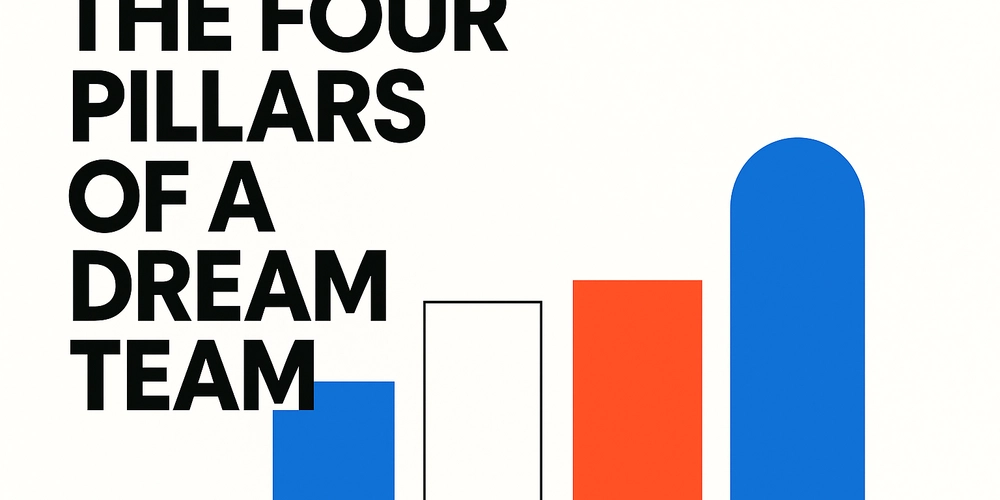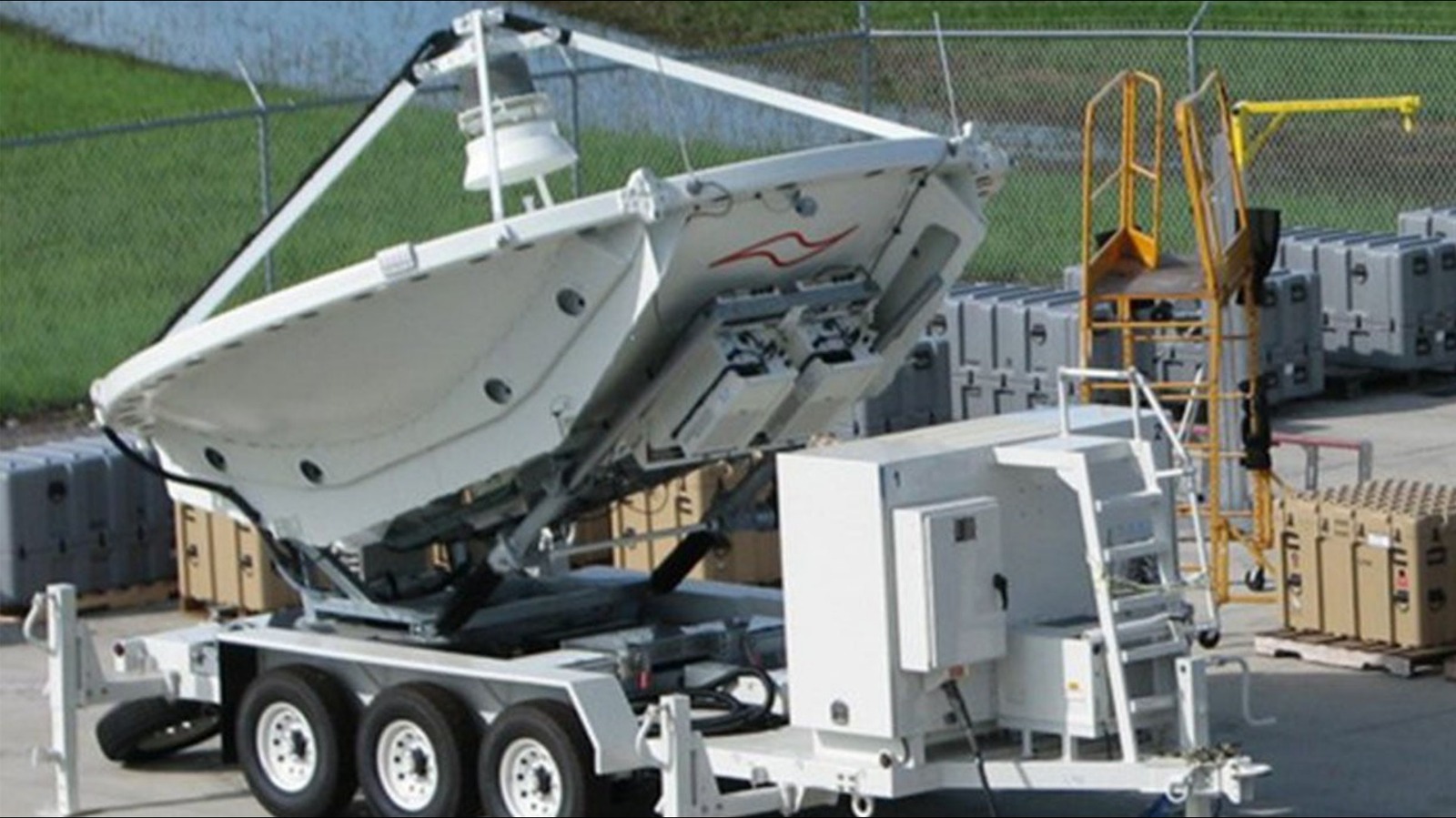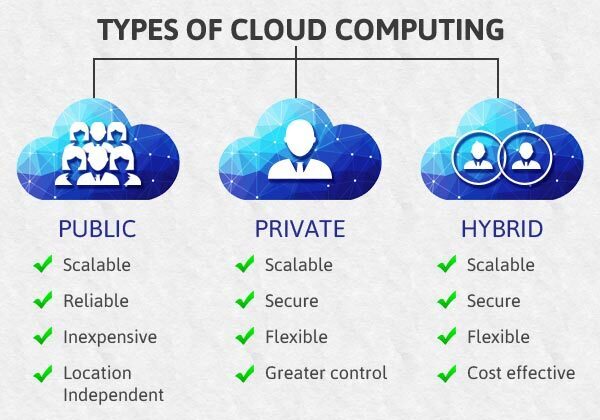The Four Pillars of a Dream Team
Over the past decade, I’ve worked with a variety of companies, encountering teams with diverse characteristics. Some were highly structured, enterprise-level teams, while others were agile startup squads that shine under the pressure. Through these experiences, I’ve gained a clear understanding of what a “dream team” means for me as a manager. I won’t focus on the technical skills of individual team members or their psychological traits. I will discuss the team as a whole, considering it a complex system with its strengths and weaknesses. I would like to share my findings based on my experiences, and I’m eager to hear about your insights as well, dear reader. Diverse. A strong team is made up of diverse people, each bringing their own unique superpower. One person may be amazing at executing tasks, while another shines in communication, making them ideal for leading projects or ensuring ideal collaboration. It’s important not to hire the same type of person across the board. A team of “superstars” might have difficulty collaborating, while a group of creative individuals may lack the focus to achieve results. Having a diverse team brings different viewpoints, challenging questions, and valuable ideas, improving the efficiency and quality of the project’s processes. Results-Driven. In my dream team, everyone is focused on delivering results, not just getting through the workday to chill out on the sofa at home. I value teams that are unafraid to say “no” or propose ideas that may significantly change the product requirements. If they find a better solution or identify issues with the current approach, they should bring it to the table immediately. Team members should be engaged and eager to understand the broader context of their work. It’s not just about completing tasks; it’s about having a “domain-driven” team that understands the significance of what they’re doing and aligns their efforts with the business’s needs. When team members follow the business objectives and the impact of their work, they are likely to be more motivated and make timely, informed decisions. The key here is fostering this proactive culture — both from the manager’s side and within the team itself. Thanks for reading Lead, Code and Collaborate! This post is public so feel free to share it. Real. Team members should be “real” with one another, which means promoting openness and direct communication. Any issues, concerns, or areas for improvement should be addressed transparently and respectfully between team members. There’s no place for hidden complaints, unresolved passive aggression, or toxic behavior — these are like poisons that will slowly and quietly destroy a team from the inside. This also means that team members must be able to actively listen and understand each other. Empathy is crucial for an effective team. As managers, it’s our responsibility to foster this culture, continuously resolving conflicts and misunderstandings before they escalate. Trust is everything! Adaptable. Anything can happen, both internally and externally, within the team, business, or project at any given time. The team should be prepared to handle crucial changes and face them gracefully. This means that everyone needs to clearly understand their responsibilities, and as a lead, you should have multiple plans in place for different scenarios. For example, if someone got sick in the middle of delivering critical functionality, there should be a backup plan for keeping everything on track. If a sudden shift in business priorities requires immediate focus on a different feature, the team should be flexible enough here as well. In all these cases, proactive planning and a shared understanding of roles allow the team to respond to changes as soon as possible. Conclusion. In a strong team, members grow daily and clearly understand their goals and tasks. It’s like a football team, making everything to change the game towards victory. They will begin to share their own ideas for improvements and optimizations. They start to recognize issues independently and, crucially, cultivate a strong motivation to address those challenges themselves. In this kind of atmosphere, even routine tasks that no one wanted to take on before will be handled with enthusiasm and quality. Recently, I went on vacation and kept checking in with my teammates, asking about work, but they brushed me off and told me to relax and not worry about it. When I returned, the work was running as smoothly as ever, tasks were being completed on time, and any problems that came up were resolved by the team without my involvement. That’s when I realized that this was truly a dream team. What qualities do you believe define a dream team? Share your insights in the comments!

Over the past decade, I’ve worked with a variety of companies, encountering teams with diverse characteristics. Some were highly structured, enterprise-level teams, while others were agile startup squads that shine under the pressure. Through these experiences, I’ve gained a clear understanding of what a “dream team” means for me as a manager.
I won’t focus on the technical skills of individual team members or their psychological traits. I will discuss the team as a whole, considering it a complex system with its strengths and weaknesses.
I would like to share my findings based on my experiences, and I’m eager to hear about your insights as well, dear reader.
Diverse.
A strong team is made up of diverse people, each bringing their own unique superpower.
One person may be amazing at executing tasks, while another shines in communication, making them ideal for leading projects or ensuring ideal collaboration. It’s important not to hire the same type of person across the board. A team of “superstars” might have difficulty collaborating, while a group of creative individuals may lack the focus to achieve results.
Having a diverse team brings different viewpoints, challenging questions, and valuable ideas, improving the efficiency and quality of the project’s processes.
Results-Driven.
In my dream team, everyone is focused on delivering results, not just getting through the workday to chill out on the sofa at home.
I value teams that are unafraid to say “no” or propose ideas that may significantly change the product requirements. If they find a better solution or identify issues with the current approach, they should bring it to the table immediately.
Team members should be engaged and eager to understand the broader context of their work. It’s not just about completing tasks; it’s about having a “domain-driven” team that understands the significance of what they’re doing and aligns their efforts with the business’s needs. When team members follow the business objectives and the impact of their work, they are likely to be more motivated and make timely, informed decisions.
The key here is fostering this proactive culture — both from the manager’s side and within the team itself.
Thanks for reading Lead, Code and Collaborate! This post is public so feel free to share it.
Real.
Team members should be “real” with one another, which means promoting openness and direct communication.
Any issues, concerns, or areas for improvement should be addressed transparently and respectfully between team members. There’s no place for hidden complaints, unresolved passive aggression, or toxic behavior — these are like poisons that will slowly and quietly destroy a team from the inside.
This also means that team members must be able to actively listen and understand each other. Empathy is crucial for an effective team. As managers, it’s our responsibility to foster this culture, continuously resolving conflicts and misunderstandings before they escalate. Trust is everything!
Adaptable.
Anything can happen, both internally and externally, within the team, business, or project at any given time.
The team should be prepared to handle crucial changes and face them gracefully. This means that everyone needs to clearly understand their responsibilities, and as a lead, you should have multiple plans in place for different scenarios.
For example, if someone got sick in the middle of delivering critical functionality, there should be a backup plan for keeping everything on track. If a sudden shift in business priorities requires immediate focus on a different feature, the team should be flexible enough here as well. In all these cases, proactive planning and a shared understanding of roles allow the team to respond to changes as soon as possible.
Conclusion.
In a strong team, members grow daily and clearly understand their goals and tasks. It’s like a football team, making everything to change the game towards victory.
They will begin to share their own ideas for improvements and optimizations. They start to recognize issues independently and, crucially, cultivate a strong motivation to address those challenges themselves. In this kind of atmosphere, even routine tasks that no one wanted to take on before will be handled with enthusiasm and quality.
Recently, I went on vacation and kept checking in with my teammates, asking about work, but they brushed me off and told me to relax and not worry about it. When I returned, the work was running as smoothly as ever, tasks were being completed on time, and any problems that came up were resolved by the team without my involvement.
That’s when I realized that this was truly a dream team.
What qualities do you believe define a dream team? Share your insights in the comments!
































































































































































![[The AI Show Episode 143]: ChatGPT Revenue Surge, New AGI Timelines, Amazon’s AI Agent, Claude for Education, Model Context Protocol & LLMs Pass the Turing Test](https://www.marketingaiinstitute.com/hubfs/ep%20143%20cover.png)






























































































































![[DEALS] Koofr Cloud Storage: Lifetime Subscription (1TB) (80% off) & Other Deals Up To 98% Off – Offers End Soon!](https://www.javacodegeeks.com/wp-content/uploads/2012/12/jcg-logo.jpg)
























![Is this too much for a modular monolith system? [closed]](https://i.sstatic.net/pYL1nsfg.png)




















































































































_roibu_Alamy.jpg?width=1280&auto=webp&quality=80&disable=upscale#)




 CISO’s Core Focus.webp?#)






































































































![M4 MacBook Air Drops to Just $849 - Act Fast! [Lowest Price Ever]](https://www.iclarified.com/images/news/97140/97140/97140-640.jpg)
![Apple Smart Glasses Not Close to Being Ready as Meta Targets 2025 [Gurman]](https://www.iclarified.com/images/news/97139/97139/97139-640.jpg)
![iPadOS 19 May Introduce Menu Bar, iOS 19 to Support External Displays [Rumor]](https://www.iclarified.com/images/news/97137/97137/97137-640.jpg)







































































































